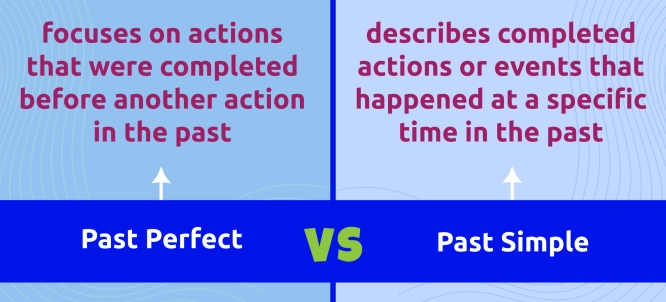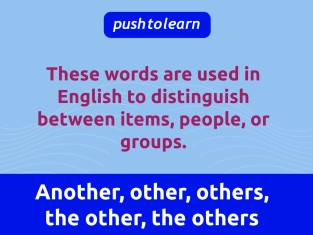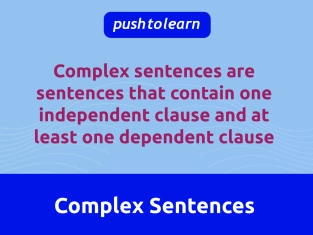by PushtoLearn
Past Simple vs Past Perfect
Table of Contents
Past Simple vs Past Perfect – Exercises
These exercises focus on Past Simple vs Past Perfect
What Is the Past Simple?
The Past Simple describes completed actions or events that happened at a specific time in the past.
How to Form It:
-
Regular verbs: Add "-ed" to the base verb (e.g., "work" → "worked").
-
Irregular verbs: Use the correct past form (e.g., "go" → "went").
Signal Words:
-
Yesterday, last week, in 2020, two hours ago, when.
Examples:
-
I visited my grandparents last weekend.
-
She finished her homework an hour ago.
-
They watched a movie yesterday.

What Is the Past Perfect?
The Past Perfect is used to describe an action that happened before another past action or time. It helps to show the sequence of events.
How to Form It:
-
Had + past participle of the verb.
Signal Words:
-
Before, after, by the time, already, just, yet.
Examples:
-
By the time I arrived, they had already eaten.
-
She had finished her project before the meeting started.
-
After he had left, I realized he forgot his wallet.
Key Differences Between Past Simple and Past Perfect
|
Aspect |
Past Simple |
Past Perfect |
|
When it happened |
Describes one specific past action. |
Describes an action completed before another past action. |
|
Focus |
Focuses on the action itself or its time. |
Focuses on the relationship between two past events. |
|
Examples |
"I ate breakfast at 8 a.m." |
"I had eaten breakfast before I went to school." |
|
Order of events |
No sequence implied. |
Shows which event happened first. |
When to Use Each Tense
Use Past Simple when:
-
The action happened at a specific time in the past.
-
Example: We went to the park last Sunday.
-
A sequence of past actions is described.
-
Example: She opened the door, turned on the light, and sat down.
Use Past Perfect when:
-
You want to show that one event happened before another.
-
Example: They had left before I arrived.
-
To describe the cause of something in the past.
-
Example: He failed the test because he hadn’t studied enough.
Common Errors
|
Error |
Why It’s Wrong |
Correct Example |
|
Using Past Simple instead of Past Perfect |
Doesn’t show the correct sequence of events. |
Incorrect: She arrived after I left. |
|
Correct: She arrived after I had left. |
||
|
Overusing Past Perfect |
Not all past actions need Past Perfect. |
Incorrect: He had gone to the store yesterday. |
|
Correct: He went to the store yesterday. |
Everyday Use Examples
Conversation:
-
A: Did you go to the party last night?
-
B: Yes, but when I arrived, they had already started dancing!
Storytelling:
-
I had finished my homework before my friend called me. After that, we went to the park together.
Formal Writing:
-
By the time the meeting started, the team had already prepared the presentation.
FAQ
Can I use Past Simple instead of Past Perfect?
In some cases, yes. If the sequence of events is clear without using Past Perfect, Past Simple might be enough.
What’s the difference between "had done" and "did"?
-
Had done refers to an action completed before another past event.
-
Did refers to a simple past action.
Can I use "just" with Past Perfect?
Yes! For example: He had just left when she arrived.
How do I know if I need Past Perfect?
Ask yourself: "Is this action happening before another past action?" If yes, use Past Perfect.
Do native speakers always use Past Perfect?
Not always. In casual speech, they may use Past Simple when the context is clear, but Past Perfect is preferred for clarity in writing or formal situations.

